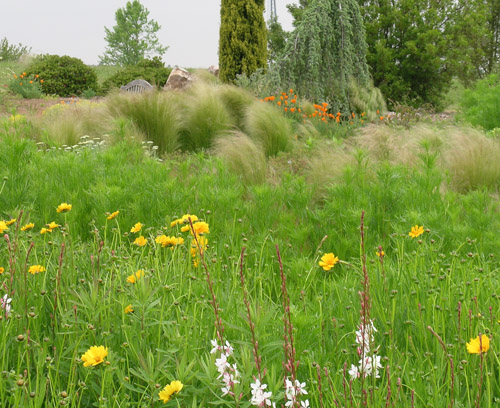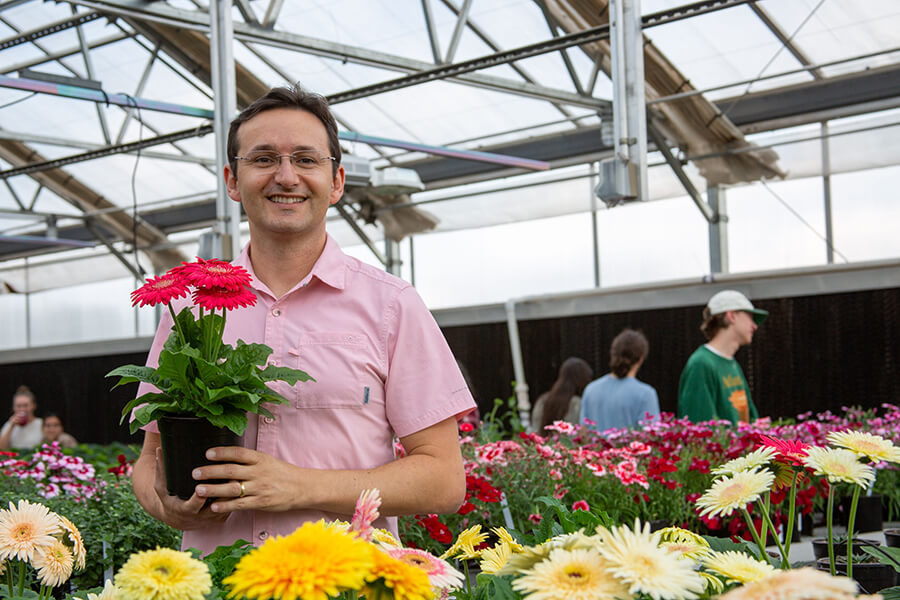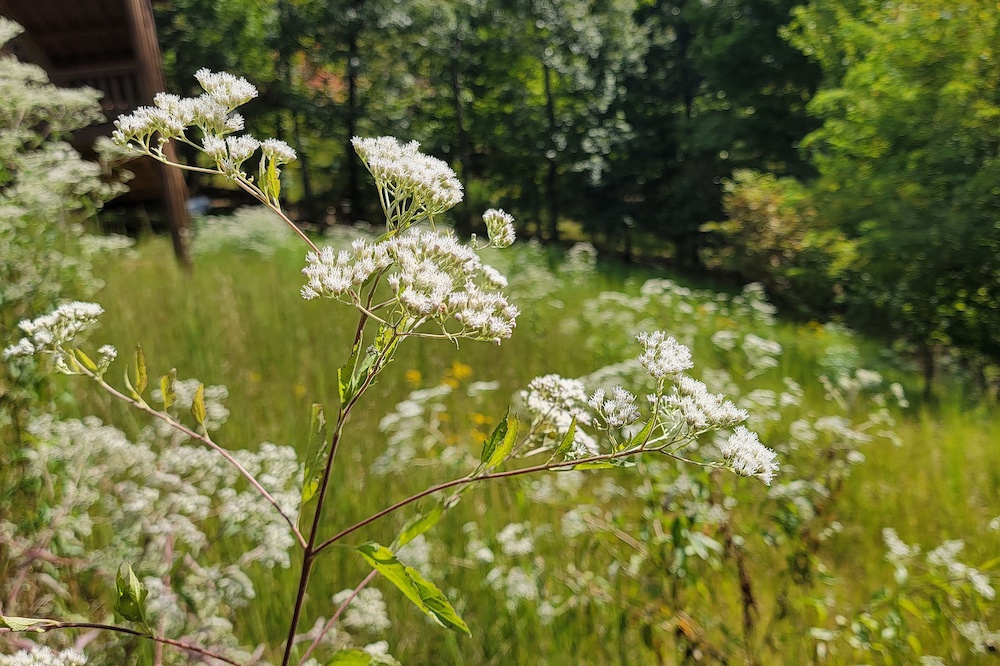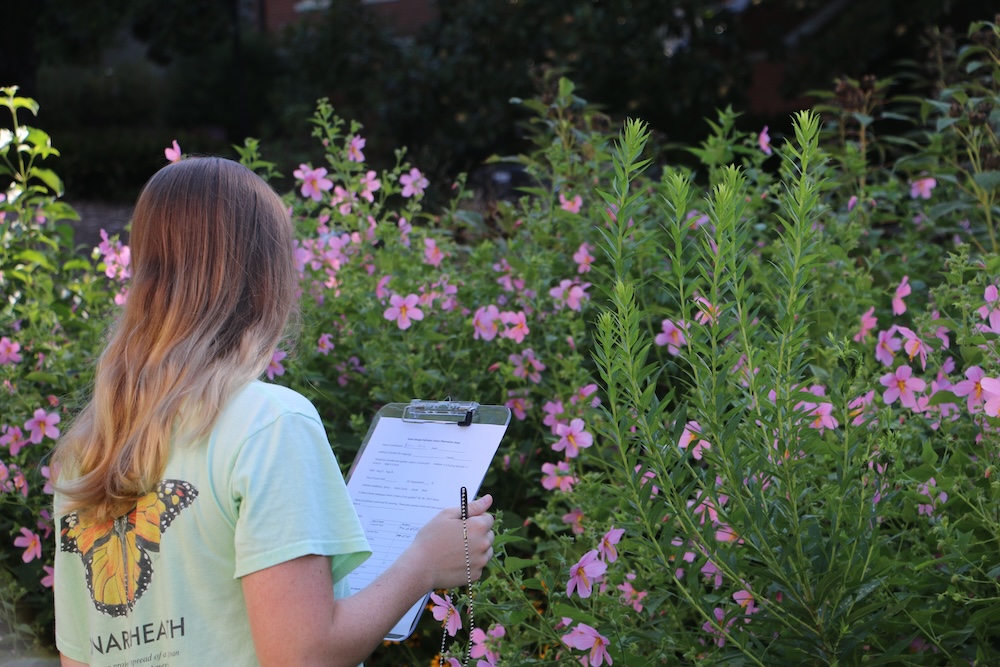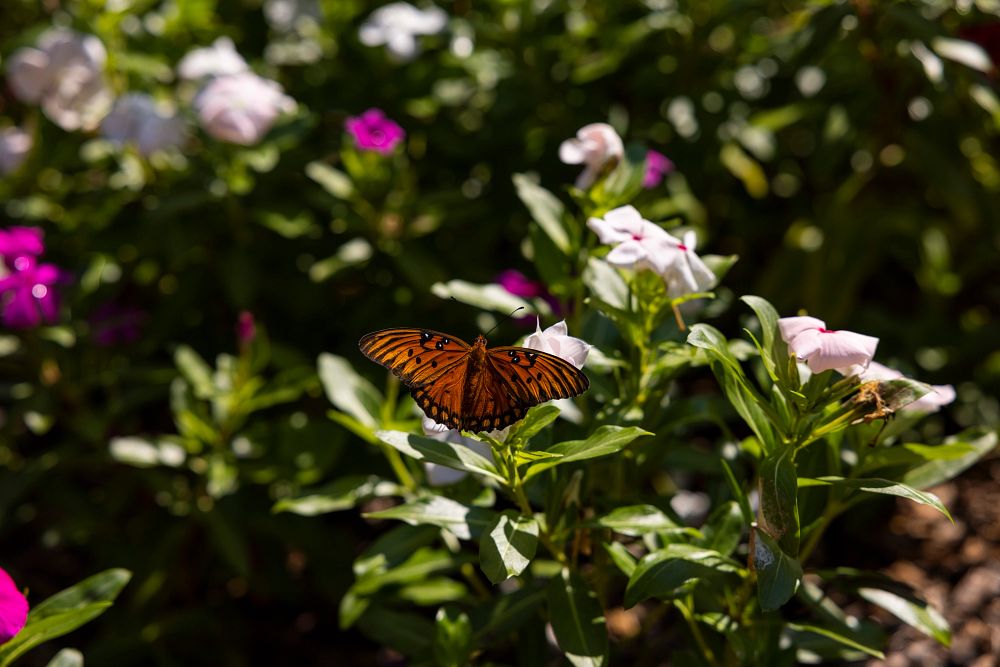Some of the more conspicuous wildflowers that garner the most attention are goldenrod, swamp sunflowers and cosmos.
Goldenrod (Solidago spp.) provides one of the last big color shows of late summer and fall. Like Indian corn, pumpkins and corn shocks, goldenrod is one of the true harbingers of fall. Goldenrod is often wrongly accused of causing hay fever and allergic reactions. The real culprit is usually windborne pollen from ragweed that blooms during the same time. Ragweed produces inconspicuous green flowers.
There are 10 goldenrod species native to the Southeast. Goldenrod grows 3 to 6 feet tall and is a perennial that forms long, spreading rhizomes that make large colonies. Stems are usually straight and unbranched below the flower. Leaves are alternately arranged. The large, bright yellow flowers are branching and often arching in many species. They are frequently found in low, wet sites along roadsides, fence rows and ditches. Flowers attract hummingbirds and butterflies, and songbirds eat the seeds.
Goldenrod prefers morning sun and afternoon shade. It also likes moist, well-drained soil. Cut back plants in early spring to encourage new growth for the season. Divide goldenrod plants in late winter or early spring for transplanting. Collect seeds in the fall when flowerheads dry and become fluffy. Seeds can be planted right away or held dry at 40 degrees Fahrenheit for later planting. Temperatures of 70 F or higher will enhance germination.
Cosmos bipinnatus are the annual wildflowers you may have seen planted alongside the exit ramps on Interstate 75 in Georgia that tend to stop traffic. Cosmos grow 3 to 5 feet in height and truly provide a “wildflower look.” Flowers are 2 to 3 inches wide and range from stunning magenta red, to white, soft pink, lilac and lavender in color. Cosmos are open, sprawling plants that also make a good cut flower.
Cosmos require very little moisture once established. A native of Mexico, it can easily adapt to all regions of the United States and performs best in full sun. Leaves are deeply dissected, almost threadlike in appearance. Although most annual wildflowers are seeded in the fall, cosmos seeds can be sowed in early spring for summer blooms. If the plants begin to decline in summer, re-sow the seeds directly into the beds, in and among plants already there. The second planting will keep the color through the fall.
Narrowleaf, or swamp, sunflower (Helianthus angustifolius) is a large, perennial plant (5 to 8 feet tall) with multibranched stems. Leaves are rough textured, 3 to 6 inches long and a half-inch wide, lance-shaped, with an occasional purple tinge. Numerous showy, yellow flower heads, 2 to 3 inches across, appear from September to October in terminal clusters. Ray flowers (petals) are bright, golden yellow and disk flowers (center) are red-brown to purple.
Swamp sunflower will adapt to dry habitats, but it grows shorter when moisture is limited. A lemon yellow variety found in the trade is one of the latest blooming sunflowers, adding a splash of color to the late fall landscape. The flowers attract butterflies, finches eat the seeds and deer like to graze on this plant.
Swamp sunflower is easy to cultivate. It thrives in sun or partial shade and moist soil. It does not like dry sites. It may need staking in wet years. It spreads by rhizomes and may require periodic thinning, especially on damp sites. Pruning in mid-summer encourages more compact growth and branching. Divide plants in the spring for transplanting. Collect seeds in November and plant them directly in flats maintained at 70 F. Germination should occur in about two weeks.
Keep in mind that many wildflowers are very prolific seed producers and can spread rapidly. Depending on perspective, one person’s wildflower is another person’s weed. Be prepared to contain them in a small area to keep friends and neighbors happy.

